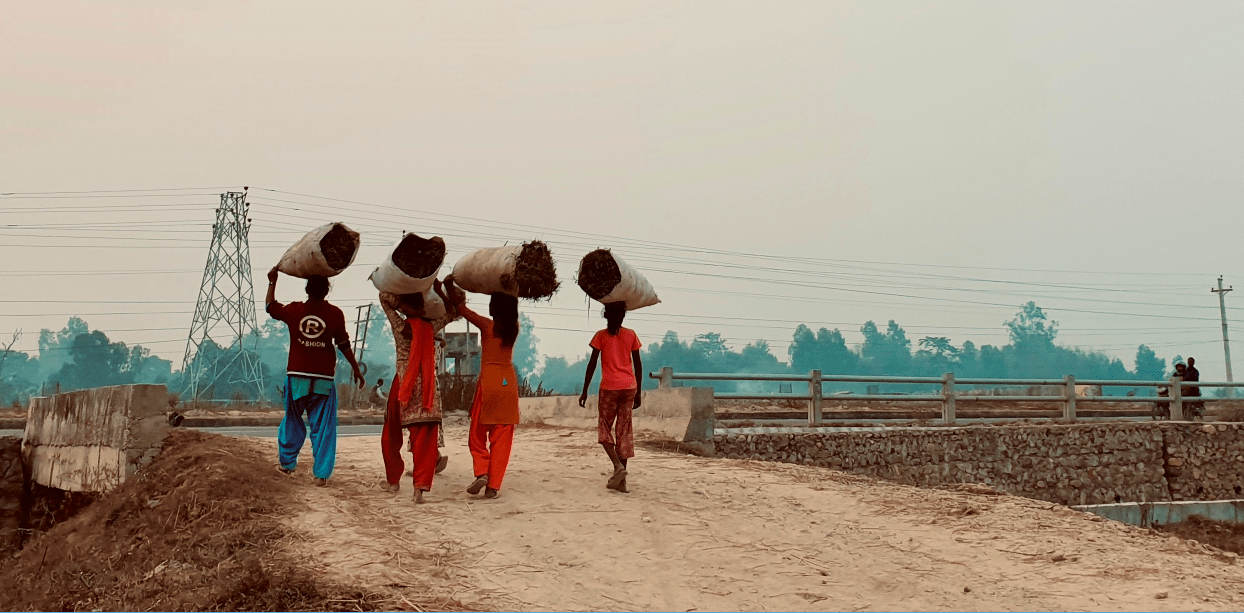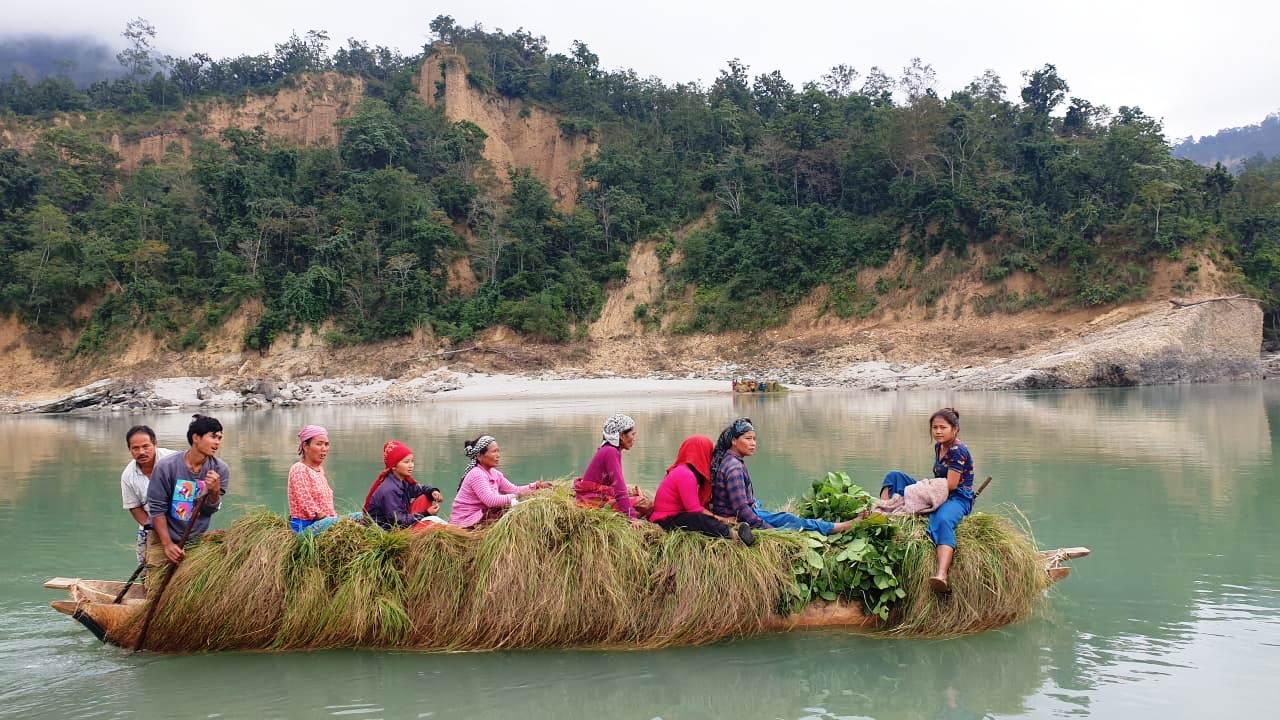Girls' Education | Women Economic Empowerment | Economic Wellbeing | Development

WITHOUT COMPREHENSIVE reforms, Nepal is unlikely to see its economy evolve into a dynamic and inclusive one. Yet Nepal is making economic progress, though slowly. Growth is expected to remain modest, averaging 4.2% this year, up from 2.3% a year earlier, according to an annual ADB report.
For continued sustainable economic growth, the country, however, needs to rethink its plans and policies. Getting rid of abortive policies and adopting the ones that have long-term economic benefits could help the country in its economic development endeavor.
One investment that has a potential to reap future returns is more investment in girls' education. A study of eight emerging economies by Citigroup and Plan International found that if all girls were to finish secondary education, GDP would increase by around 10% on average within a decade.
Educating girls means they are likely to become rich, independent and healthy. When girls learn to read and write, their likelihood of facing early marriage, teenage pregnancy and domestic violence decrease. With better education, they will be able to adapt to diverse challenges, including economic shocks, which have most bearing on women. As a result, educated women can lead long and prosperous lives. Their children will also inherit these benefits.
Channeling resources into educating girls could help the country elect more female politicians, who are more supportive of investment in health and education and bring positive impacts on the quality of governance, transparency and accountability.
In Nepal, an estimated 1,200 mothers still die during childbirth every year. This number would fall by two-thirds if all women completed primary education. In 2020 the infant mortality rate was 25.45 deaths per thousand live births. This would halve if all women completed secondary schools. Children born of educated mothers get good nutrition and are less likely to suffer from stunting.
Nepal has markedly reduced poverty compared to neighboring countries. But the 2015 earthquakes severely impacted this achievement. According to simulations conducted by the World Bank, it pushed at least 700,000 to one million Nepalis into poverty. Educating girls can help reduce poverty and lessen the effects of several crisis. This is obvious—higher education mean higher income and better capabilities to cope.
Women with secondary education earn more than those who never go to school. Schooling gives women the upper hand in gaining financial independence, and in turn lending them more bargaining power in their families. It will also erode the idea that male kinship groups are the building block of society.
 Educated women give birth to fewer babies. This way, their children get to spend more time in school and receive many advantages. Children of educated mothers are more likely to get inoculated for preventable diseases; they are more likely to get a good education and good-paying jobs. If people are earning more, the government can collect higher tax receipts, ratcheting up their revenues.
Educated women give birth to fewer babies. This way, their children get to spend more time in school and receive many advantages. Children of educated mothers are more likely to get inoculated for preventable diseases; they are more likely to get a good education and good-paying jobs. If people are earning more, the government can collect higher tax receipts, ratcheting up their revenues.
Nepal is one such country where the working-age female population (11.53 million) outnumbers the working-age male (9.2 million), reports Nepal Labour Force Survey 2017-18. Women participation in the labour market, however, is considerably low. Only 26.3% of the female working age population is active in the market (either working or looking for work). Expanding access to education means girls have education and are fit for jobs, which demand more skills, education and expertise than ever before.
At present, Nepal is in a youth bulge period (the proportion of the young population in working age is greater than the proportion that is not). It typically lasts for a limited time frame, after which the course reverses—leading to an increase in the dependency ratio. The dependency ratio is projected to rise again in 2050.
Increasing investment in education will not only facilitate the current demographic dividend, but will also pave the way for the next. When girls are educated and working, savings will rise, which could be invested in human or physical capital.
Nepal has made significant improvements in terms of both schools and trained teachers. This has led to increased enrollment of girls and inclusion in educational access. It has also introduced reforms, such as provision of scholarships targeting the poor, girls, and children belonging to marginalized communities.
The education sector, however, still fails to deliver needed student learning and key foundational skills at the rate they should be. Because of this, the transition to higher education and education-to-employment is difficult. This can be improved through reforming what is being taught (quality of the curriculum), who is delivering them (capacity of teachers and schools) and how it is being delivered (pedagogical methods and use of technology).
Within schools, reforms are necessary in areas, such as meals, teaching methods and infrastructures. Outside schools, some of the underlying structural causes are poverty and gender discrimination; social protection measures, such as cash transfer to poor families, who otherwise cannot afford education for their children, can ease these social ills. Easy access to higher education, better jobs and leadership roles can inspire young girls and motivate parents to send their girls to schools.
Between 2012 and 2020, spending on education increased from NRs 63.9 billion to NRs 163.75 billion. A decreasing trend was observed between 2011 and 2018, though, in terms of the budget allocation for education. At present, the government spends around 11% of the budget on education—well below its own target of 15%, an international average of 15% and 20% proposed by the 'Education for All initiative'. On top of that, over 80% of the education budget goes to paying salaries, leaving little money for investments in the use of technologies in classrooms and building well-equipped schools.
Rural areas, where challenges are even more magnified, particularly lack resources for girls education. More funding, eradication of gender barriers and innovative teaching methods through use of technology can ensure inclusive access, participation and better learning outcomes. Investment in human capital is important for a sustainable growth in the future, and this is one way to achieve it.
Read More Stories
Kathmandu’s decay: From glorious past to ominous future
Kathmandu: The legend and the legacy Legend about Kathmandus evolution holds that the...
Kathmandu - A crumbling valley!
Valleys and cities should be young, vibrant, inspiring and full of hopes with...
Nepal’s high-altitude farms are thirsty. Could ice stupas help?
As snowlines rise and mountain springs run dry, Nepals high-altitude communities are facing...